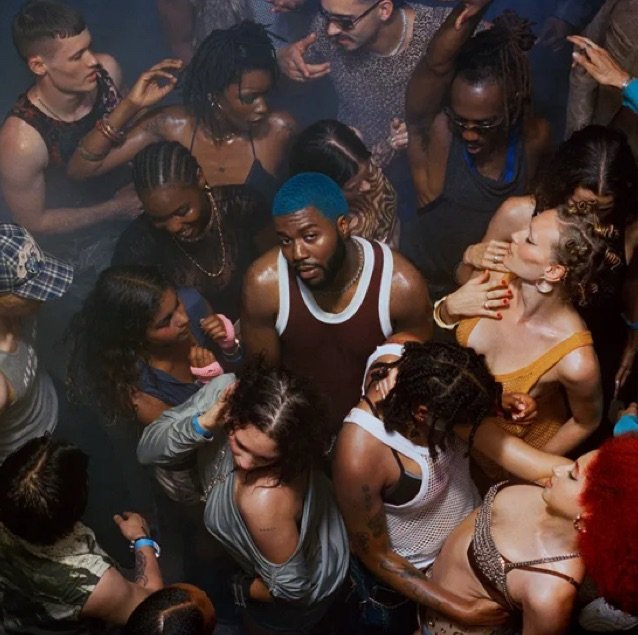
“The Acolyte” saved the best for last.
A long time ago, in a cinema not too far away, Star Wars meant something. A new Star Wars film was an event unto itself, frankly unlike anything else. To pile into a movie theater on opening night and wait with baited breath as the Lucasfilm logo shined across the screen just before John Williams’ triumphant and transportive fanfare thrust you into a galaxy far, far away… those nights comprise some of the most purely theatrical and cinematic viewing experiences of my entire life. In essence, this is what has been lost over the past several years of Star Wars being solely relegated to the small screen: divorced from the fervor of the theatrical experience and oversaturated by a glut of Disney+ series’ of varying quality, Star Wars has lost the majesty it once had. Or at least it had, prior to The Acolyte.
In so many ways, The Acolyte feels quintessentially, cinematically, Star Wars. Through forging a path so distinctly its own, through crafting grandiose imagery and action, through weaving meaningful themes and characterizations into the very fabric of its visual storytelling, and through articulately engaging with the larger mythos and legacy of Star Wars as a saga, Leslye Headland and co. made Star Wars truly feel like it meant something again. This thought occurred to me as the opening moments of The Acolyte’s season finale (fittingly titled “The Acolyte”) played out. As the Lucasfilm logo shines across the screen, the sound of Osha’s breathing is layered atop of it. And for the first time in several years, I waited with bated breath, giddy with anticipation, to see a new Star Wars.
And guess what? It absolutely fucking ruled. With its finale, The Acolyte ensures its place proper with the larger legacy of the Star Wars galaxy, sticking the landing with aplomb.
Directed by Hanelle M. Culpepper with a script by Jason Micallef and Jasmyne Flournoy, “The Acolyte” takes all the narrative, thematic, and character threads from across the season and interweaves them into an intimate-in-scale but monolithic-in-scope final conflict. By returning to Brendok, the sight of the flashback episodes that chronicled the childhood tragedy of Osha and Mae, there’s an inherent emotional heft to the proceedings. This is heightened all the more by Kevin Jenkins’s production design, which enhances his already spectacular tactile set by adding years of wear and decay to it, making us truly feel the time passed. Amandla Stenberg also does some truly transcendent work here, really working to sell the idea in her dual performance as Osha and Mae that neither of them has seen this setting since the destruction.
All of this works really well, and allows ‘The Acolyte’ to essentially act as a self-contained pathos-laden climax, in which the four central characters of the series (Osha, Mae, Qimir, and Sol) are all let loose in the confines of this already emotionally-charged environment to bounce off of, conflict with, and ultimately turn against one another. This capitalizes so beautifully upon the work and rigorous dedication to character and motivation that series has demonstrated for its entire season. Because we’ve seen a full season storyline of these characters each respectively changing, growing, and evolving before our very eyes, these cathartic showdowns feel so well and truly earned.
This is great writing, through and through, as is everything surrounding it, heightened all the more by Culpepper’s steadfastly stupendous direction. I was already a fan of Culpepper’s after she so roundly knocked her previous episode “Teach/Corrupt” out of the park. In that episode, she thread the needle of delicately working to sew the seeds of what was to come in each of the characters’ interpersonal relationships, and here, she gets to reap the benefits. And boy does she.
In many ways, the finale is the best of both worlds, not just of The Acolyte, but of Star Wars as a whole. It has big action setpieces, that feel indelibly cinematic and exhilarating, but it also has some of the quietest and most intimately personal moments of the entire show.
The space chase sequence features some of ILM’s most stunning work ever put on the small-screen, and really opens things up for the entire Acolyte creative team to fire on all cylinders. As Sol gives chase to Mae’s smaller escape ship, it plays like something out of Steven Spielberg’s Duel, making a meal out of emphasizing the scale differentiation between the two ships. Michael Abels’ score is so routinely breathtaking that it’s easy to take it for granted, but I especially adored his onomatopoeic use of high-end strings and keys to score the moment that Sol and Mae’s ships enter freefall. Similarly, the corss-cutting duels between Sol and Qimir and then Osha and Mae, respectively, are phenomenally impactful. Christopher Cowan’s choreography and staging is taken to an operatic high here, incorporating more wire-work than ever before and truly externalizing the internal conflicts between these characters in inspired forms.
Yet simultaneously, these thrilling spectaculars are only made so affecting by the emotive character foundations and performances they are built upon. A scene like Osha and Mae’s initial reunion in their old childhood bedroom sees Amandla Stenberg selling both sides of the series’ central juxtaposed relationship in spades. I also really adore the visual progression here and the ways in which Headland, Culpepper, and company took a technical hindrance and turned it into a deeply-motivated visual choice. For so much of The Acolyte, Osha and Mae are visually separated by the frame, even when they’re in the same scene. One can count the number of frames they’ve actually shared together prior to this episode on one hand. But here, the two share the frame in such a fluid and natural way. Their fight sequence is captured in long, sustained takes. Even afterward, their emotional reconciliation and eventual parting are captured in a similar way, with each of them present in the frame. In this way, audiences literally watch Osha and Mae come together over the course of the series through visual language alone.
This same technique of externalizing the internal through blocking, framing, and direction also applies to Osha and Qimir, and its delightfully visceral. One can track the emotional trajectory of their relationship to one another through the visual grammar of the episode, and it makes it all the more palpably affecting when the episode reaches its culminating shot.
And we should absolutely talk about that shot a bit. First off, not enough can be said about Manny Jacinto and his endlessly charismatic performance as Qimir across the series as a whole. The layers of depth and nuance which Jacinto is able to unveil solely in minimized reaction shots in this episode is a true testament to his abilities, and he is wonderful here. His gentle physicality in relation to Osha is especially of note, and the way in which he plays Qimir’s final moments with Osha are inspired. Their final shot is so many things at once: a pitch-perfect culmination of their respective arcs, a visual composition in direct conversation with George Lucas’ THX-1138, and a dunk on J.J. Abrams’ The Rise of Skywalker. To briefly break it down, the final shot of Rise of Skywalker was a post-hoc attempt on Abrams’ part (the entire shot was created digitally a matter of weeks prior to the film’s release) to visually homage the final shot of Lucas’ THX-1138. However, whereas that shot meant a character facing a brave, bold, and uncharted new world in THX, it meant quite the opposite in Rise of Skywalker. Abrams put Rey back on Tattooine, to bury Luke and Leia’s lightsabers on a planet they both hated, and had her standing there looking off at a sandy world that she was far too familiar with.
In this way, closing with this shot for The Acolyte both taps into the true meaning of Lucas’ visual composition (Osha and Qimir are facing an uncharted future together, both as individuals and as Sith) and further illustrates the dissonance inherent in Abrams’ attempted use of it (having Rey standing alone being in stark contrast to Osha and Qimir standing together). Furthermore, the musical score Michael Abels uses to accompany this shot, a distinctly gothic romance-sounding sting of violin (played by Stenberg herself!) creates a real sense of harmony and synchrony with the visuals, making it a perfect note to end on.
One other really intelligent and articulate visual choice I do want to touch on briefly is the introduction of Darth Plagueis. By introducing this long-gestating Star Wars character visually through utilizing the same out-of-the-cave camera angle utilized as a motif numerous times throughout prior episodes, Culpepper exquisitely ties the voyeurism of the camera to Plagueis himself. He’s only onscreen for a matter of seconds, but the implication of the visual language and direction here is very much that he has been present throughout and watching carefully. This rings all the truer when Osha and Qimir return to this planet in the final moments of the episode. We do not see Plagueis again, but his presence looms large thanks to Culpepper’s inspired visual choice.
RGM GRADE
(A)
Ultimately, The Acolyte’s finale is truly wonderful. It is big, operatic, unabashed Star Wars, through and through. The cinematography was deft and delicate in some truly surprising ways, the editing was momentum-filled and propulsive, Lee Jung-jae’s final turn as Sol was his most impressive work to date. The Acolyte closes out its first season on a high-note, bringing a real sense of fervor and anticipation back to Star Wars in delightful fashion. Here’s to hoping that Star Wars is through the doldrums of monotonous, one-note regurgitation and can truly embrace the vibrant engagement of something as articulate and special as The Acolyte.
Discover more from RATINGS GAME MUSIC
Subscribe to get the latest posts sent to your email.










